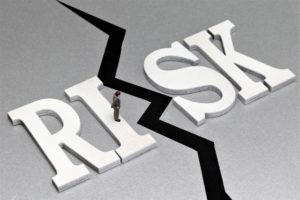Risk assessment and management are crucial processes for organizations aiming to mitigate potential risks
and ensure the smooth operation of their business.
A well-defined risk assessment and management flow is essential to identify, analyze, and address risks effectively.
In this article, we will explore a comprehensive approach to risk assessment and management,
providing insights into the key steps involved in the process.
By understanding the flow of risk assessment and management, organizations can proactively identify risks,
implement appropriate controls, and make informed decisions to safeguard their operations and achieve their objectives.
Contents
Understanding Risk Assessment and Management
A. Definition:
Risk assessment is the process of identifying potential risks, analyzing their likelihood and impact,
and prioritizing them based on their significance.
Risk management involves the implementation of strategies and measures to mitigate or eliminate identified risks.
B. Importance of Risk Assessment and Management:
By adopting a systematic approach to risk assessment and management,
organizations can minimize the impact of risks, protect their assets, enhance decision-making, and improve overall performance.
Key Steps in the Risk Assessment and Management Flow

A. Step 1: Risk Identification
1. Identify Potential Risks:
Conduct a comprehensive analysis of the organization’s activities, processes, and external factors to identify potential risks.
This can be done through risk workshops, surveys, interviews, and historical data analysis.
2. Categorize Risks:
Classify identified risks into relevant categories such as operational, financial, legal, reputational, and strategic risks.
Categorization enables a better understanding of the nature and scope of risks.
B. Step 2: Risk Analysis
1. Assess Likelihood and Impact:
Evaluate the likelihood of risks occurring and their potential impact on the organization.
This analysis helps prioritize risks and allocate appropriate resources for risk management activities.
2. Quantitative and Qualitative Analysis:
Utilize quantitative methods such as probability assessments and financial modeling, along with qualitative methods
such as expert judgment and scenario analysis, to gain a comprehensive understanding of the risks.
C. Step 3: Risk Evaluation
1. Risk Prioritization:
Based on the results of risk analysis, prioritize risks according to their significance and potential consequences.
This allows organizations to focus on managing high-priority risks first.
2. Risk Tolerance and Acceptance:
Determine the organization’s risk tolerance level and establish criteria for accepting or mitigating risks.
This ensures alignment with the organization’s risk appetite and strategic objectives.
D. Step 4: Risk Treatment
1. Risk Mitigation Strategies:
Develop and implement appropriate risk mitigation strategies to reduce the likelihood or impact of identified risks.
This may include implementing controls,
developing contingency plans, or transferring risks through insurance or contractual arrangements.
2. Monitoring and Review:
Establish mechanisms to monitor the effectiveness of risk treatment strategies and regularly review their implementation.
This enables organizations to adapt and refine their risk management approach as needed.
E. Step 5: Risk Communication and Reporting
1. Stakeholder Engagement:
Communicate risk-related information to relevant stakeholders, including executives, employees, and external partners.
Transparent and effective communication fosters a shared understanding of risks and promotes a risk-aware culture.
2. Reporting and Documentation:
Document the risk assessment process, findings, and risk management actions taken.
Comprehensive reporting ensures accountability, facilitates future reference, and supports regulatory compliance.
For inquiries and consultations, please contact us here
Integration of Risk Assessment and Management into Business Processes

A. Embedding Risk Management:
Integrate risk assessment and management practices into the organization’s day-to-day operations,
decision-making processes, and project management.
This ensures that risk management becomes a routine and proactive part of the organization’s activities.
B. Continuous Improvement:
Emphasize the importance of continuous improvement in risk assessment and management.
Regularly evaluate and enhance the effectiveness of
risk management practices to adapt to changing circumstances and emerging risks.
Summary:Risk Assessment and Management Flow: A Comprehensive Approach

A robust risk assessment and management flow is essential for organizations to identify,
analyze, and address risks effectively.
By following a systematic approach that includes risk identification, analysis, evaluation, treatment,
and communication, organizations can proactively manage risks, protect their assets, and make informed decisions.
Integrating risk management into business processes and
fostering a culture of continuous improvement further enhances the effectiveness of risk assessment and management.
With a well-defined risk assessment and management flow in place, organizations can navigate uncertainties,
seize opportunities, and achieve sustainable growth.
I relocated from the Philippines to Korea to establish a track record in cultivation schemes.
We sincerely hope that you will utilize our insights for your business.
For inquiries and consultations, please contact us here



